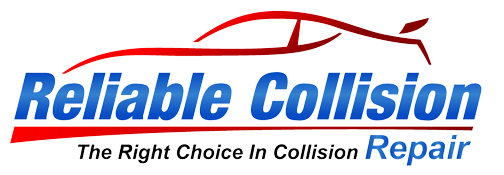Replacement Parts Quality
When it comes to OEM quality there is really no debate. Replacement OEM parts are the same exact parts that were used on your vehicle when it was built, the same parts were on it before it was damaged, with the same fit, finish, structural integrity, corrosion resistance and dent protection.
The quality picture is much less clear for imitation parts: Testing of imitation crash parts performed by Consumer Reports Magazine in the February 1999 issue really blew the lid off of what the insurance companies have been trying to keep under cover for years. This is not news by any means. Previous tests by many different manufactures, independent collision repair organizations and research labs have found similar problems with the fit, finish, corrosion protection and dent resistance of the parts tested. Despite proponents (mainly insurance companies) of the imitation crash parts that they are of “like kind & quality” or “functionally equivalent” to a BMW, they both can transport you around, but the two are hardly the same.
What could the use of substandard imitation crash parts mean to you and the investment you have made in your vehicle?
Here are some examples for you:
1. Poor fit can mean that the gaps between the aftermarket parts and the undamaged OEM parts may be uneven, the corners not as square, the body-lines don’t line up properly. The repairer may also have to force the parts to fit by grinding out the mounting holes and banging on the edges with a block of wood and a hammer to make them line up better.
2. Substandard Finish can mean that the aftermarket parts will have waves and ripples that will be apparent when comparing them to the originals and that inadequate or insufficient surface preparation may jeopardize the durability of the finish paint.
3. Structural Integrity can be compromised when insufficient welding processes have taken place or when inadequate adhesives are used in the manufacturing process of aftermarket parts… for example, to connect the parts of a good together. I have seen the result of an aftermarket hood latch breaking off of a hood and allowing it to fly open and plaster itself across a windshield at 65 mph on a busy freeway, luckily nobody was hurt in that accident. Also many OEM hoods, fenders, and bumper reinforcements are made from high strength steel to aid in collision protection, many aftermarket parts are made from regular steel which could make your vehicle not as safe as the factory intended.
4. Insufficient Corrosion Protection can mean that the aftermarket part may rust out quicker in areas where regular steel is used in place of corrosion-resistant galvanized steel. The primer used on many aftermarket parts is not the same quality as the Electro-coated epoxy primer used on OEM parts.
5. Less Dent Resistance can mean that the exterior panels on your vehicle will be susceptible to dings and dents because the metal is thinner and weaker than the OEM parts they replaced.
Crash Parts Warranty
When genuine OEM replacement parts are used on your vehicle for collision repairs, generally the terms of your vehicle’s original limited warranty will remain in effect.
Warranties for imitation parts are generally less comprehensive.
1. Some cover costs of the parts only, and exclude labor and paint charges. Plus you have to chase down the company that made the part originally if you have a problem.
2. Some may require that any covered repairs be made at the shop that originally did the repair. What if you move or the shop is out of business or you didn’t like the quality of the first repair?
3. Some limit the coverage terms to a small number of years and make you jump through hoops to get any results.
4. When imitation parts are used in repairs, collateral damage that may be caused by the imitations may not be covered by your vehicles original warranty. You could pay this out of your pocket.
Remember This When Getting Repairs Done
It is the basic obligation of your insurance company to pay to return you collision-damaged vehicle back to its pre-accident condition, not dictate the repairs. In light of all the quality short comings identified, you need to ask your insurance company if it can meet its obligation to you by using cheap imitation parts. Your vehicle had OEM parts on it when it was damaged, you must demand that OEM parts be used to repair it after an accident. The quality of your vehicle can only be restored with the use of genuine OEM replacement parts.


